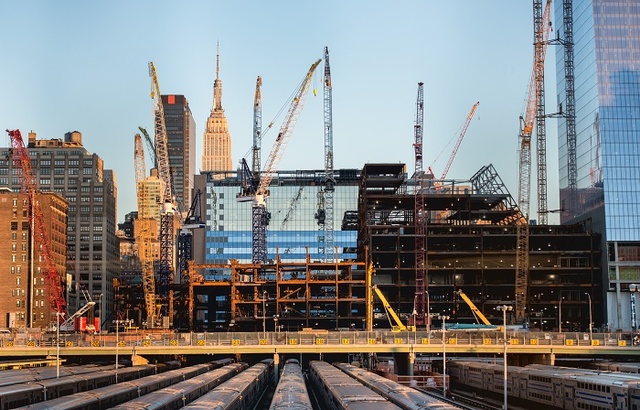A little over two weeks into the new year and the London stock market has already seen its first casualty – one of the nation’s biggest contractors, Carillion.
It’s nearly impossible to walk around the City without stumbling across one of the newly deceased firm’s many construction projects. I personally have passed by the Barts Square redevelopment, still a labyrinth of scaffolding emblazoned with the Carillion logo, many times on my way to St Paul’s, just a short stroll from Last Word’s headquarters in Farringdon.
Carillion’s swift but not totally unexpected disintegration has reopened a few burning questions – the most obvious being: how could this happen?; followed by: who in their right mind would continue to own a major stake in the company after so many widely reported red flags?; and finally, why on earth did the government farm out £2bn (€2.25bn, $2.75bn) of contracts to the troubled contractor after it released its first profit warning?
Even if one were to make the case for buying on the dip, the fact that hedge funds were zeroing in on Carillion in record numbers should have given some investors pause.
Too good to be true
So, what happened? Carillion’s habit of over-extending itself and taking on too many risky contracts that ultimately proved unprofitable is typically cited as one of the main culprits behind its downfall. That was the reason for Carillion’s “£845m black hole” in the early summer, which triggered the first profit warning.
But there is more to it than that, says Russ Mould, investment director at AJ Bell. Carillion’s complicated past “littered with acquisitions,” its dividend yields that “looked to good to be true”, lack of management incentivisation and razor-thin profit margins (coupled with loads of debt), are just some of the reasons why the collapse was inevitable, Mould states.
Mould also thinks that “too many investors look at the profit and loss account and nothing else, forgetting the old market maxim that ‘profit is a matter of opinion, cash is a fact’”.
“Profits may drive short-term sentiment but it is cash that pays the bills such as salaries, interest and tax, so investors must always look at the balance sheet first, the cashflow statement second and the profit and loss account third. The first will explain how safe (or otherwise) the firm is. The second can show if there are any problems, accounting issues or issues of earnings quality to address. And the third will provide a short-term snapshot of trading.”
Who owns it?
Perhaps unsurprisingly, the investors who hold the largest piece of the pie has changed rapidly over the last 12 months. Carillion’s successive profit warnings succeeded in scaring off many previous majority stakeholders.
Scottish-based investment firm and hedge fund sponsor, Kiltearn Partners, was one of the top shareholders in the construction firm last year post-July profit warning, with a 9.85% stake in the business as of 7 August 2017. However, it halved its stake to 4.94% in December and had no shares in Carillion at the time of the liquidation, a spokesperson from the company confirmed.
International Adviser understands that wealth manager Brewin Dolphin, which held 5% of the firm in early March last year, cut its exposure to 0.5% due to concerns the firm was over-extending itself by bidding low and winning more contracts than it could profitably execute.
Standard Life Investments, now operating under Aberdeen Standard Investments, also owned close to 5% of the business around the same period. It too drastically cut its exposure, selling the remainder of its active exposure at around the time of the July profit warning. The asset manager has a “very small amount held passively”, it said.
The largest stakeholders currently are direct-to-consumer platforms Hargreaves Lansdown and Halifax Investments, as well as a smattering of institutional funds.
According to Bloomberg data, Hargreaves Lansdown is the biggest shareholder by far, owning 13% of Carillion. Danny Cox, Hargreaves Lansdown’s head of communications, says that figure is actually closer to 16% but clarified that none of those shares are held within the firm’s funds. Rather, its sizeable stake is made up from individual investors on its platform who hold the stock.
From that standpoint, it sounds like the little guy, the individual investor, is the real loser here. But what drove this investor behaviour in the first place? Maybe they were buying into the stream of good news about Carillion winning work without taking a proper look under the bonnet? Or perhaps some were tempted by the absurdly cheap price tag?
Hargreaves Lansdown’s own senior analyst Laith Khalaf thinks that while some of the retails platform’s investors held Carillion by virtue of holding a broad portfolio, others were probably banking on a major turnaround story.
“I suspect there are some investors who allocate a certain portion of their portfolios to turnaround situations. Perhaps some of those investors became interested in Carillion when it entered difficulties, when we had the share price collapse.”








